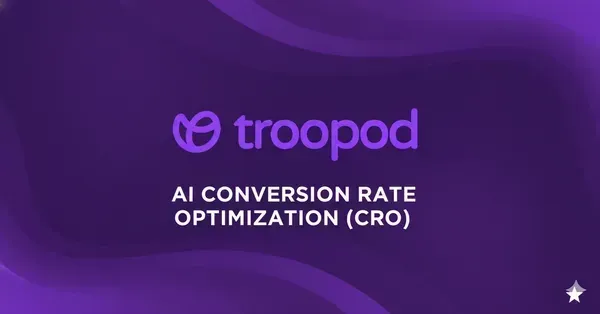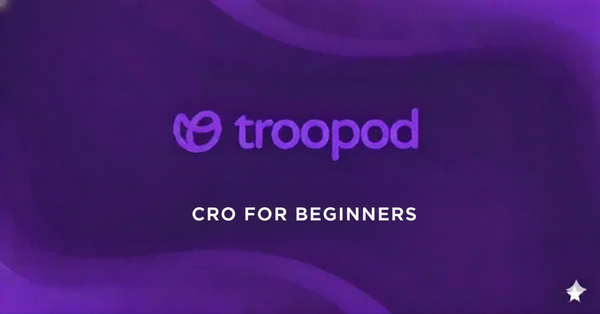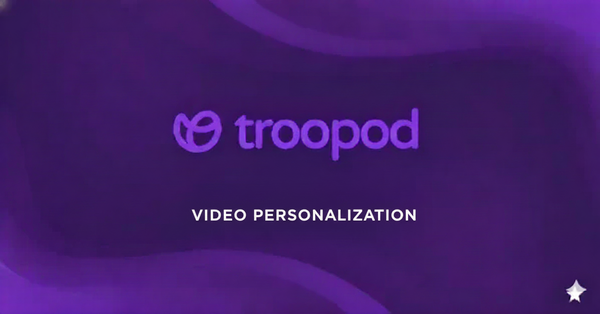Cracking the Code: How Perfect Ad-to-Landing Page Alignment Can Unlock Hidden Revenue in Your 2025 Marketing Strategy

Picture this: You've crafted the perfect ad campaign. Your targeting is laser-focused, your creative is compelling, and your budget is optimized. Users are clicking at record rates. But then something devastating happens—68% of your hard-earned traffic abandons your landing page within 15 seconds.
Sound familiar? You're not alone. The disconnect between paid ads and landing pages has become a silent revenue killer, creating a staggering $2.8 billion problem in wasted advertising spend annually across digital marketing budgets.
But here's the game-changing insight most marketers miss: for every 1% improvement in ad-to-landing page alignment, businesses see an average 2.3% increase in conversion rates. That means a company spending $100,000 monthly on paid ads could unlock an additional $46,000 in revenue through strategic alignment optimization.
The opportunity is massive. The solution is systematic. And the time to act is now.
The Hidden Revenue Killer: Understanding the Alignment Crisis
The Shocking Reality of Misaligned Marketing
Research reveals a disturbing truth: 73% of paid traffic experiences some level of message mismatch between ads and landing pages. This isn't just a minor optimization opportunity—it's a conversion catastrophe happening at the most critical moment in your customer journey.
Consider this common scenario: A user sees your Facebook ad promising "25% off premium skincare + free shipping." They click, excited about the deal. But when they land on your page, there's no visible discount, the shipping policy is buried in fine print, and the headline talks about "revolutionary beauty solutions" instead of the specific offer that caught their attention.
Result? Instant cognitive dissonance. Trust evaporates. The user bounces.
This misalignment doesn't just hurt individual conversions—it compounds across your entire marketing ecosystem, inflating your customer acquisition costs and deflating your return on ad spend.
The Psychology Behind the Problem
When users click your ad, they're making a micro-commitment based on the expectations you've set. Your ad creative acts as a promise, and your landing page needs to fulfill that promise immediately and convincingly.
The moment users detect inconsistency between what they were promised and what they're seeing, several psychological barriers emerge:
Trust Erosion: Mismatched messaging signals unprofessionalism or, worse, deception Cognitive Load: Users have to work harder to understand how the page relates to the ad Decision Paralysis: Conflicting information creates uncertainty that kills conversions Abandonment Impulse: The easiest response to confusion is to leave and find a clearer alternative
The 7-Pillar Framework for Perfect Alignment
After analyzing thousands of high-converting ad-to-landing page combinations, we've identified seven critical pillars that separate revenue-generating campaigns from budget-wasting disappointments.
Pillar 1: Message Consistency - The Foundation of Trust
The Rule: Every element in your ad creative must appear on your landing page within the first screen view.
This goes beyond simply matching headlines. True message consistency means:
- Headline Harmony: Your landing page H1 should mirror or naturally extend your ad headline
- Offer Echo: Discount percentages, bonus items, and promotional terms must match exactly
- Value Proposition Reinforcement: The core benefit promised in the ad should be immediately visible and compelling
- CTA Language Continuity: If your ad says "Get Started Free," your landing page button shouldn't say "Sign Up Now"
Pro Tip: Create a message map before launching any campaign. Document exactly what you're promising in your ad, then audit your landing page to ensure every promise is fulfilled above the fold.
Pillar 2: Visual Continuity - The Seamless Experience
Users process visual information 60,000 times faster than text. If your ad and landing page look like they're from different brands, you've lost the battle before users even read your copy.
Visual consistency checklist:
- Brand Colors: Use the same color palette across ad creative and landing page
- Typography: Font families and text hierarchy should feel cohesive
- Image Style: Product shots, lifestyle imagery, and graphic elements should maintain consistent aesthetic
- Layout Flow: The visual journey from ad to page should feel natural and intentional
Case Study: A SaaS company increased conversions by 34% simply by ensuring their landing page hero image matched the product screenshot in their LinkedIn ads, creating instant visual recognition and trust.
Pillar 3: Offer Alignment - Promise and Delivery
Nothing destroys conversion rates faster than offer misalignment. If users can't immediately find the deal that motivated their click, they'll assume it doesn't exist.
Critical offer elements to align:
- Discount Terms: "25% off" in your ad means "25% off" prominently displayed on your page
- Shipping Promotions: Free shipping promises must be clearly visible, not hidden in checkout
- Countdown Timers: Urgency created in ads should continue on the landing page with synchronized timers
- Bonus Items: Bundle components mentioned in ads must be explicitly shown on the product page
Pillar 4: Audience Relevance - Speaking Their Language
Generic landing pages are conversion killers. Your page should reflect the specific audience segment you're targeting with surgical precision.
Segmentation strategies:
- Age-Specific Design: Gen Z visitors expect different visual and content approaches than Baby Boomers
- Geographic Customization: Local references, currency, and cultural nuances matter
- Income-Appropriate Positioning: Luxury vs. budget messaging should align with your targeting parameters
- Interest-Based Recommendations: Fitness enthusiasts and tech professionals need different proof points and benefits
Pillar 5: Device Optimization - Multi-Screen Consistency
With mobile traffic dominating most industries, your alignment strategy must account for different device experiences while maintaining message consistency.
Device-specific considerations:
- Mobile-First Design: Social media traffic is predominantly mobile—optimize accordingly
- Desktop Depth: Search ad traffic often expects more detailed information on larger screens
- Touch-Friendly Elements: Buttons, forms, and interactive elements must work seamlessly on mobile
- Load Speed Optimization: Fast load times are critical for maintaining the momentum from ad click
Pillar 6: Traffic Source Adaptation - Platform-Specific Alignment
Different advertising platforms create different user expectations and behaviors. Your landing page should adapt to these nuances while maintaining core message consistency.
Platform-specific strategies:
Social Media Traffic expects:
- Interactive, engaging layouts that feel native to social platforms
- User-generated content and social proof
- Shorter attention spans requiring immediate value delivery
- Mobile-optimized experiences with thumb-friendly navigation
Search Traffic responds to:
- Information-rich pages with detailed product benefits
- Credibility signals like reviews, certifications, and guarantees
- Clear navigation and site structure
- Trust badges and security indicators
Retargeting Campaigns perform best with:
- Simplified conversion paths focused on closing the deal
- Previous interaction acknowledgment
- Personalized recommendations based on browsing history
- Streamlined checkout processes
Pillar 7: Conversion Path Clarity - Frictionless Journey
The journey from landing page visit to conversion should be so smooth that users barely notice the steps they're taking.
Friction elimination strategies:
- Minimized Form Fields: Only ask for information you absolutely need
- Payment Method Transparency: Show accepted payment options upfront
- Shipping Information: Clear delivery times and costs before checkout
- Trust Signal Integration: Security badges, guarantees, and testimonials at decision points
Platform-Specific Mastery: Optimizing for Each Channel
Google Ads: The Search Intent Connection
Google Ads users are actively seeking solutions, which creates unique alignment opportunities:
Dynamic Search Ads: Implement real-time page content matching to ensure your landing page exactly reflects what users are searching for.
Responsive Search Ads: Use headline variations that directly connect to your landing page H1 and subheadings.
Shopping Campaigns: Ensure product page information matches exactly what appears in shopping ads, including pricing, availability, and product details.
Local Campaigns: Create location-specific landing pages that reference local landmarks, events, or community connections.
Results: Companies implementing Google Ads alignment strategies see an average 23% conversion rate lift and 18% reduction in cost per acquisition.
Meta Platforms: The Social Storytelling Extension
Facebook and Instagram users are in discovery mode, scrolling through content. Your alignment strategy should continue the narrative journey:
Video Ad Continuation: If your ad features a product demonstration, your landing page should pick up where the video left off with complementary visuals or the next step in the process.
Social Proof Integration: Align testimonials and reviews between your ad creative and landing page to reinforce credibility.
Interactive Elements: Match the engagement style of your ads with interactive landing page elements like quizzes, polls, or product configurators.
User-Generated Content: Maintain UGC aesthetics across both ad creative and landing page to create authentic brand consistency.
Results: Meta campaigns with proper alignment see 31% higher conversion rates and 26% stronger engagement-to-conversion ratios.
LinkedIn: The Professional Precision Approach
B2B audiences on LinkedIn expect professional, industry-specific messaging:
Industry-Specific Case Studies: Match your ad's industry focus with relevant case studies and testimonials on your landing page.
Professional Imagery: Maintain corporate-level design standards and professional photography styles.
Lead Generation Optimization: Align your ad's value proposition with lead magnet content and form fields.
Company-Size Targeting: Tailor landing page content to match whether you're targeting startups, mid-market, or enterprise prospects.
Results: LinkedIn campaigns with strategic alignment generate 29% more qualified leads and achieve 22% higher lead-to-customer conversion rates.
The Technology Stack for Scalable Alignment
Dynamic Content Management Systems
Manual alignment doesn't scale. Modern businesses need automated systems that ensure consistency across hundreds or thousands of ad variations:
UTM Parameter-Based Customization: Automatically adjust landing page content based on traffic source, campaign, and audience parameters encoded in your URLs.
Built-in A/B Testing: Test different alignment approaches with integrated experimentation platforms.
Real-Time Personalization: Serve different content variations based on user behavior, location, device, and referral source.
Cross-Platform Tracking: Monitor user journeys from initial ad exposure through final conversion to identify alignment gaps.
Attribution and Analytics Integration
Understanding alignment impact requires sophisticated measurement:
Multi-Touch Attribution: Track how alignment improvements affect the entire customer journey, not just immediate conversions.
Cross-Device Mapping: Follow users across devices to understand how alignment affects multi-session conversion paths.
Traffic Source Performance: Compare conversion rates, engagement metrics, and revenue per visitor across different campaign-page combinations.
Conversion Path Analysis: Identify exactly where users drop off and how alignment improvements reduce friction.
Marketing Automation Platforms
Scale your alignment strategy across entire marketing ecosystems:
Campaign-Specific Landing Page Generation: Automatically create optimized landing pages for each campaign using templates and dynamic content insertion.
Real-Time Content Synchronization: Keep ad creative and landing page content in sync as you make updates to campaigns.
Performance-Based Triggers: Automatically adjust landing pages based on real-time performance data and conversion metrics.
Cross-Channel Message Consistency: Ensure alignment extends beyond ads to email campaigns, social media, and other marketing touchpoints.
Measuring Success: KPIs and Attribution Models
Primary Performance Metrics
Conversion Rate by Traffic Source: Track how alignment improvements affect conversion rates from different advertising platforms and campaigns.
Cost Per Acquisition Improvements: Monitor how better alignment reduces the cost of acquiring new customers.
Return on Ad Spend Increases: Measure revenue generated per dollar spent on advertising as alignment improves.
Quality Score Uplift: For search campaigns, track how landing page relevance improvements affect Google Ads Quality Scores and reduce cost per click.
Advanced Attribution Approaches
First-Click Attribution: Ideal for measuring awareness campaigns where initial touchpoint alignment is crucial.
Multi-Touch Attribution: Essential for complex B2B sales cycles where multiple aligned touchpoints influence final conversion.
Time-Decay Models: Perfect for long consideration cycles where early alignment builds trust for later conversion.
Cross-Device Attribution: Critical for omnichannel campaigns where users research on mobile but convert on desktop.
Alignment-Specific KPIs
Message Match Score: Use post-conversion surveys to measure how well landing pages met expectations set by ads.
Visual Consistency Rating: A/B test different visual alignment approaches and measure user preference and conversion impact.
Offer Clarity Testing: Use user testing and heatmap analysis to ensure promotional offers are immediately clear and compelling.
Conversion Path Friction Analysis: Measure drop-off rates at each step of the conversion process and optimize for smoother journeys.
The ROI of Perfect Alignment: Real-World Results
The numbers don't lie. Companies that prioritize ad-to-landing page alignment see transformative business results:
- E-commerce brands report 25-40% increases in conversion rates within 90 days of implementation
- SaaS companies achieve 30-50% reductions in customer acquisition costs through better qualified traffic conversion
- B2B service providers generate 2-3x more qualified leads from the same advertising spend
- Local businesses see 20-35% improvements in foot traffic and phone call conversions from location-based campaigns
But the most significant impact isn't just immediate conversion improvement—it's the compounding effect of better customer experience, improved brand trust, and increased customer lifetime value.
Your Action Plan: Getting Started with Alignment Optimization
Week 1: Audit Your Current State
- Document all active ad campaigns and their corresponding landing pages
- Identify message, visual, and offer misalignments using the 7-pillar framework
- Measure baseline conversion rates and cost per acquisition metrics
Week 2: Quick Wins Implementation
- Fix obvious headline and offer mismatches
- Ensure promotional codes and discounts are prominently displayed
- Align call-to-action language across ads and landing pages
Week 3: Visual and Content Alignment
- Update landing page visuals to match ad creative aesthetics
- Refine copy to maintain consistent brand voice and messaging
- Implement device-specific optimizations for mobile and desktop traffic
Week 4: Testing and Optimization
- Launch A/B tests comparing aligned vs. unaligned page variations
- Implement tracking systems to measure alignment impact
- Set up automated reporting to monitor ongoing performance
The Future of Marketing Is Aligned
As digital advertising costs continue rising and customer acquisition becomes increasingly competitive, the brands that win will be those that create seamless, trustworthy experiences from first click to final conversion.
Ad-to-landing page alignment isn't just a conversion optimization tactic—it's a fundamental business strategy that affects every aspect of your digital marketing performance. The companies that master this alignment will unlock hidden revenue, reduce acquisition costs, and build stronger customer relationships that compound over time.
The opportunity is in front of you. The framework is proven. The only question remaining is: Will you be among the companies that crack the code and unlock their hidden revenue potential, or will you continue leaving money on the table with misaligned marketing experiences?
The choice—and the revenue—is yours.
Ready to transform your advertising ROI through perfect alignment? Start with your highest-traffic campaign and implement the 7-pillar framework today. Your future customers (and your CFO) will thank you.





